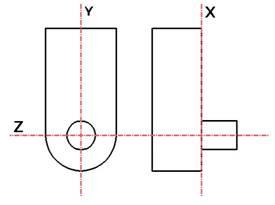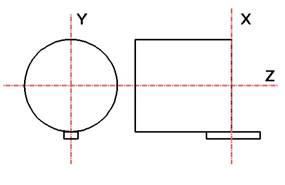Reson Seabat 81xx-900x (Serial) - 20
Description
Driver for Reson Seabat 81xx & 900x series Multibeam Echosounders using a serial cable connection. Driver will automatically detect the input format, but will only decode R_THETA or RI_THETA packets.
The XTF version will store the raw XTF data records in the Qinsy database. Such a database can afterwards be used to export the XTF records to a separate file. However, using this option will create much larger data bases.
Driver Information
| Driver | Reson Seabat 81xx-900x (Serial) | Interface Type | Serial | Driver Class Type | Counted |
|---|---|---|---|---|---|
| UTC Driver | Input / Output | Input | Executable | DrvSeabatSerial.exe | |
| Related Systems |
| ||||
| Related Pages | |||||
Decoding Notes
The time tag from the data packets is not used, instead the time of arrival of the first string is used in combination with the latency provided in the output message.
The checksum will always be used, if a packet is encountered with an invalid checksum it will not be further decoded.
Brightness and Colinearity flags are decoded and used by Qinsy.
Per beam the system reports 4 quality flags:
Bit 0: Brightness: 1 = pass, 0 = fail
Bit 1: Colinearity: 1 = pass, 0 = fail
Bit 2: Bottom Detect Process (Magnitude): 1 = used, 0 = not used.
Bit 3: Bottom Detect Process (Phase): 1 = used, 0 = not used.
This translates in the following Quality indicators:
binary figures | as shown in Qinsy | Brightness | Colinearity | Bottom Detection Process (Magnitude) | Bottom Detection Process (Phase) |
|---|---|---|---|---|---|
0000 | 0 | FAILED | FAILED | NOT USED | NOT USED |
0001 | 1 | PASSED | FAILED | NOT USED | NOT USED |
0010 | 2 | FAILED | PASSED | NOT USED | NOT USED |
0011 | 3 | PASSED | PASSED | NOT USED | NOT USED |
0100 | 4 | FAILED | FAILED | USED | NOT USED |
0101 | 5 | PASSED | FAILED | USED | NOT USED |
0110 | 6 | FAILED | PASSED | USED | NOT USED |
0111 | 7 | PASSED | PASSED | USED | NOT USED |
1000 | 8 | FAILED | FAILED | NOT USED | USED |
1001 | 9 | PASSED | FAILED | NOT USED | USED |
1010 | 10 | FAILED | PASSED | NOT USED | USED |
1011 | 11 | PASSED | PASSED | NOT USED | USED |
1100 | 12 | FAILED | FAILED | USED | USED |
1101 | 13 | PASSED | FAILED | USED | USED |
1110 | 14 | FAILED | PASSED | USED | USED |
1111 | 15 | PASSED | PASSED | USED | USED |
Interfacing Notes
It is recommended by Reson to use a one way cable. No serial data should be sent to the top unit.
Seabat 81xx/900x Offsets


Drawings that show the acoustic centers for the SeaBat 900x series (left) and SeaBat 8101 (right) systems
Source: Reson Inc website
Database Setup
In Database Setup for this driver some driver specific settings can be entered. These supersede the command line parameters.
The following settings can be selected:
| Setting | Option (bold=default) | Description |
|---|---|---|
| Observation Time | Use Time Of Arrival/Decode Time From Message | Supersedes PPS Drivers.io option. If set to "Use Time Of Arrival" then the timetag field in the Seabat data string is ignored. Instead the Qinsy time is used to timetag the first character of the Seabat package header and in this case the latency field in the data string is used to correct the Qinsy timetag to ping time. If set to "Decode Time from Message" then the timetag field in the Seabat data string will be used as observation time of the multibeam data. There are some rough checks on the timetag, i.e. it must not be 0 and be within 5 minutes of the Qinsy pc time. If these fail, then the Qinsy pc time is used as described above. Note that the Seabat topside needs to be synchronized with UTC time when this option is used. |
| Raw Bathymetry Storage* | Disabled/Enabled | When Enabled the Raw bathymetry (e.g 0x17, 0x18) packet is stored in the Qinsy database for XTF export purposes and usage in Fledermaus. This setting supersedes the old XTF option. |
*) The decoded raw multibeam data is also stored, so by enabling Raw Bathymetry Storage the Database will grow larger.
